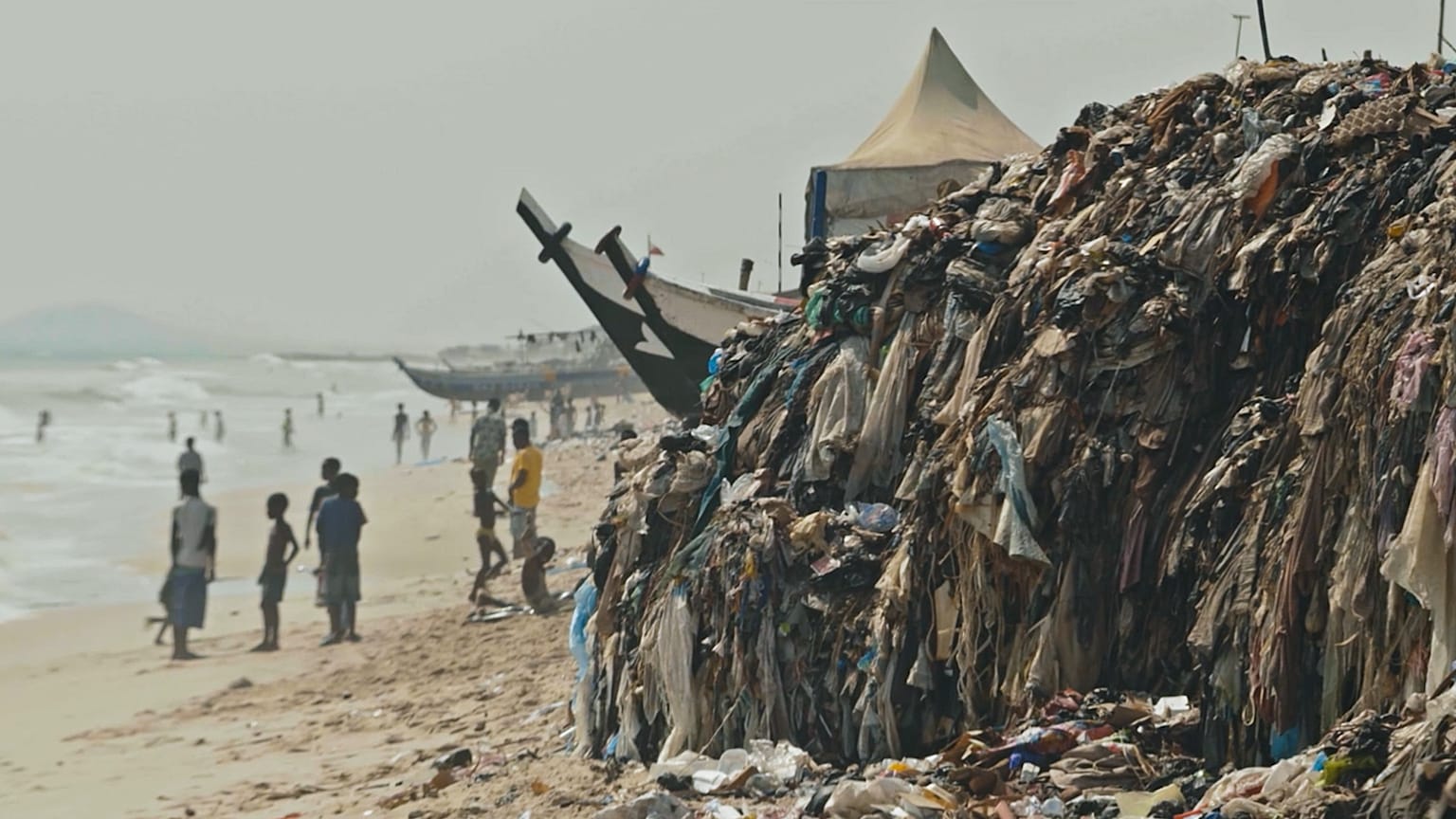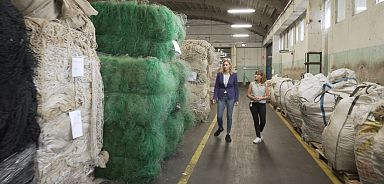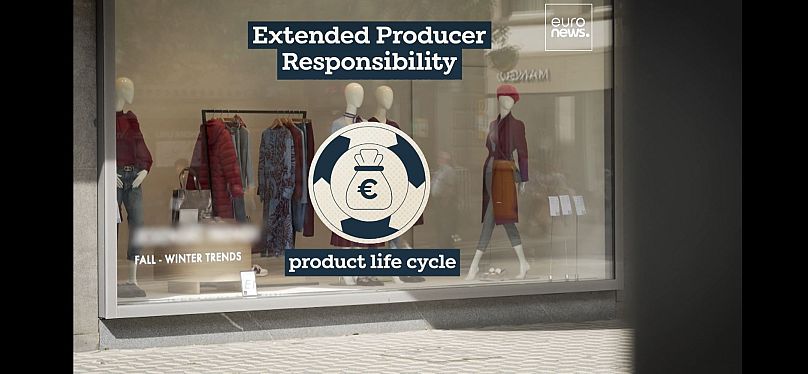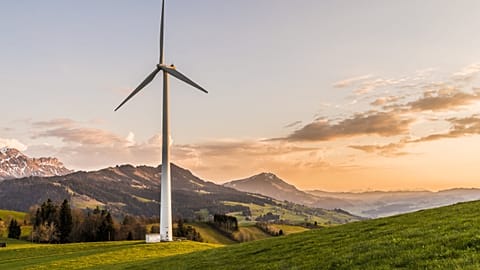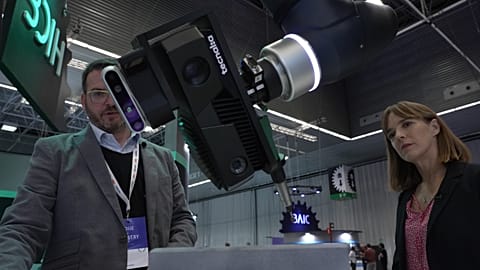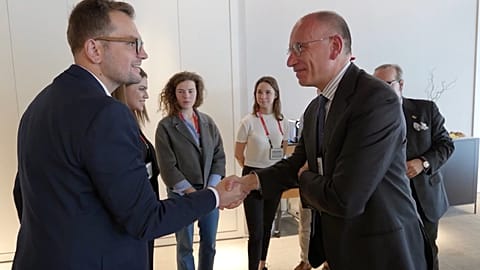From cast-off clothes to fishing nets Europeans produce a staggering 12.6 million tonnes of textile waste per year. Most is burned, dumped in landfills or exported. But fibre-to-fibre recycling is another option that a new European Commission scheme will push companies to take.
It seems we just can’t resist buying new clothes. But what happens to the millions of tonnes of textiles we throw away every year in Europe? A lot of it goes to developing countries, such as Ghana.
"Simply there, there are 15 million pieces of clothing that arrive every single week in the city of Accra," Matteo Ward tells Business Planet. He is the CEO and Co-founder of WRÅD, a sustainable design studio in Milan. "There was a new generation of kids... they have never seen the soil underneath all of this textile waste, imagine they were playing on grounds that were built of our textile waste.”
The Recycling Option
But there are alternatives to the massive dumping abroad of unwanted waste; primarily reuse and recycling. To find out more Business Planet went to a recycling plant in Slovenia where old fishing nets and carpets are transformed into a nylon yarn called ECONYL, which can be recycled - infinitely.
These materials are all made from nylon 6, a common type of nylon, which can be turned into ECONYL. Aquafil is an Italy-based company using this technology:
“Aquafil is producing nylon but instead of using oil we are starting from waste," explains Giulio Bonazzi, the firm's chairman and CEO. "Some of them are particularly ugly like fishing nets, carpets and other plastic waste that the industry couldn’t recycle before. So for us it’s a kind of journey from trash to treasure."
A chemical recycling process turns the nylon waste back into raw caprolactam - a substance that is normally made from crude oil. It is squeezed into long spaghetti-like strings and then cut into tiny chips, before it is spun into fine strands of yarn.
It has many potential uses, as Tina Mavrič, PR and marketing officer for Aquafil Slovenia told Business Planet: “Some of the ECONYL yarns are used for carpets but these ones that we see here are used to make clothes, for example, sportswear, swimwear, underwear, anoraks and backpacks.”
It’s how those items are designed in the first place that makes all the difference to how they can be recycled, according to Giulio Bonazzi: "You can imagine a jacket that is having different layers of fabric, the sewing thread, the labels, the zippers, metal components, many different types of fibre sometimes intimately blended together, that’s the difficulty of arriving to fibre-to-fibre recycling - the product is simply not made for being recycled at the end."
Making big brands responsible
In Europe, textile waste is a 12.6 million tonnes a year. Most is either burned or goes to landfill. Some is exported. The European Commission plans to introduce an Extended Producer Responsibility (EPR) scheme. This makes the producer - the brand - pay for the entire life cycle of their products, including the disposal. The more polluting an item, the more they pay. The money will go towards recycling facilities, and research into circularity.
At his studio in Milan, Matteo Ward has high hopes of the Extended Producer Responsibility scheme: "This is a fundamental change because it will put incentives hopefully on the brand in creating products that are designed to last longer, that are more durable, that are eventually recyclable, that can be regenerated, which is something that brands don’t do right now because they have zero incentives in doing that."
Matteo is something of a poacher turned gamekeeper. He used to work for a mainstream US brand but became disillusioned with fast fashion after a textile factory collapsed in Bangladesh in 2013, killing 1,134 people.
“That was the moment, you know when you look at yourself in the mirror and you’re like ‘man, what am I doing?" Matthew says. "I did not want to be complicit in the murder of thousands of people worldwide through my job - never - but in reality I was because I never, ever questioned whether the jeans, and T shirts and hoodies we were selling were coming from factories like that one.”
WRÅD works with schools to highlight the social and ecological problems of fast fashion, and consults with brands like Candiani Denim, an Italian company that makes biodegradable denim.
Recycling technology and sustainable fabric will play a part in the future of fashion, but consumers will need to change their habits to really want to reduce the impact of waste clothes on the world.














